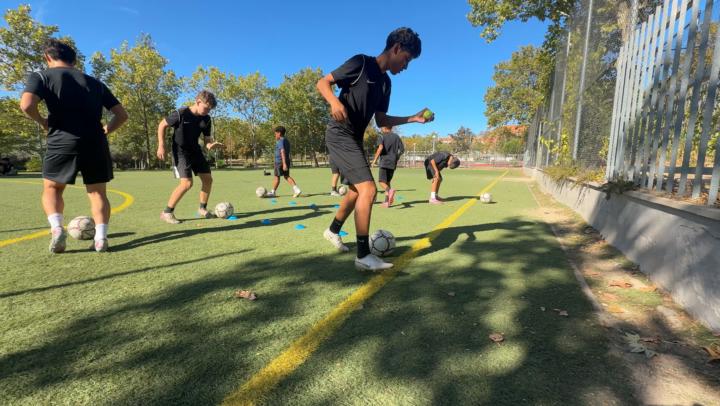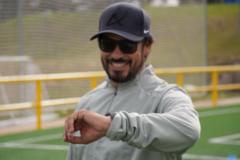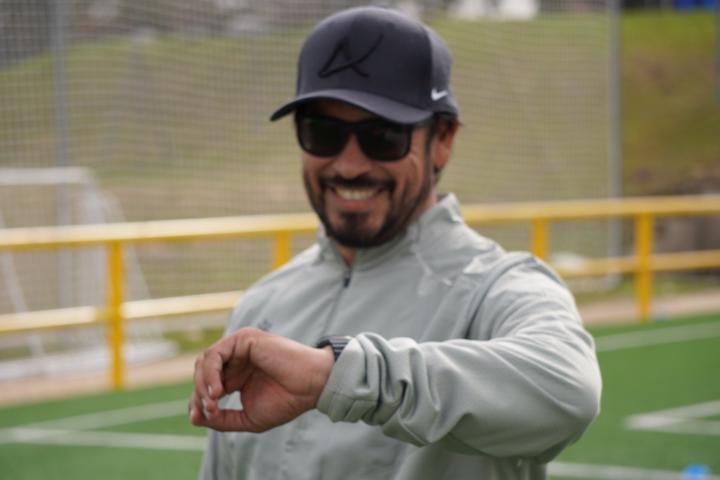Activity
Mon
Wed
Fri
Sun
Jan
Feb
Mar
Apr
May
Jun
Jul
Aug
Sep
Oct
Nov
Dec
What is this?
Less
More
Owned by Ron
The official community of Forms Academy. Where parents & coaches learn the science, systems, & philosophy that raise elite youth footballers (soccer).
Memberships
Football scouting community
334 members • Free
Skoolers
180.8k members • Free
9 contributions to Forms Football Skool
Why Training Groups at Forms Academy Sometimes Mix
At Forms Academy, we place children in training environments designed for growth. This sometimes means boys and girls train together, or younger players train with older ones. At other times, an older player may train with younger peers. These decisions are not about fairness in the short term but about what is best for each child’s long-term development. Boys and Girls in the Same Session Boys and girls build football skills through the same brain and body processes. Training together gives both groups valuable benefits. Girls often face faster speeds of play, which sharpens their decision-making. Boys encounter different movement and rhythm patterns, which force them to adapt. This variety helps all players become more complete and resilient. Younger Players Training with Older Younger players grow when they are pushed just beyond what feels comfortable. Training with older players increases the speed of decision-making and helps them adjust to higher physical and cognitive demands. It also allows older players to lead and refine their technique against younger, faster opponents. Older Players Training with Younger Sometimes, an older player needs to train with a younger group. This can happen when they need to rebuild confidence, recover from injury, or correct technical gaps that would otherwise be hidden in faster environments. Slowing the game down allows them to reset their foundation before moving forward again. It is not a punishment but a smart developmental step. Training Up is Not the Same as Playing Up Parents often ask why their child cannot simply play up in games if training up is helpful. The answer is that training is controlled and guided by coaches. We can raise or lower the level of challenge, stop, or adjust as needed. Games cannot be adjusted. If a player is not ready for the speed and physicality, they may get fewer touches, lose confidence, or develop poor habits. Training is where we create stretch. Games are where children consolidate what they have learned.
2
0
🆕 New whitepaper added to classroom! 🎓✏️
Check out the discussion here or go straight to the Classrom
1
0
Whitepaper: Dual-Task Overload and Neural Adaptation in Youth Football Development
Community Feed Post: Executive Summary At first glance, the dribble–tennis ball wall exercise looks messy. Players freeze, mis-sequence, under-hit passes, or even throw the tennis ball instead of striking the football. But these short-circuits aren’t failures — they are proof the brain is learning under strain. Here’s what the science shows: 1. Short-term: Mistakes sharpen error awareness, accelerate weak-foot calibration, and teach players to split attention while staying composed. 2. Long-term: Repetition builds automaticity, bilateral dexterity, anticipation, and resilience under pressure. Players stop panicking in chaos because their nervous systems have been rewired to thrive in it. 3. Why it matters: Traditional drills look clean in practice but fail in matches. This exercise embraces chaos and error, ensuring skills transfer to real competition where attention is always divided. At Forms Academy, we use this drill to demonstrate our methodology: football is not about rehearsed neatness but about training the brain to perform under the realities of the game. The full module, with expanded analysis, research references, and parent-friendly PDF, is now live in the Classroom under Whitepapers & Research → Training the Brain, Not Just the Feet. Discussion prompt: - Parents: How do you react when your child looks awkward or makes repeated mistakes in training? - Coaches: Are you comfortable letting players look messy in practice if it produces resilience in games? - Where in matches have you seen hesitation, weak passes, or freezes that mirror what happens in this drill?
3
0
Dual-Task Overload and Neural Adaptation in Youth Football Development
This exercise looks simple at first glance: dribble through cones, toss or bounce a tennis ball, then play into a wall and explode out. But when you watch players attempt it, you’ll notice the complexity of the exercise challenging the players’ brain as they navigate the process. Some freeze mid-action. Some throw and kick at the same time. Others roll a soft pass that barely reaches the wall. These “short circuits” aren’t mistakes, rather, they are evidence of the brain under construction. The upcoming paper breaks down why this happens at a neurological level. We’ll explore the motor cortex, cerebellum, basal ganglia, and prefrontal systems, and explain why overloaded players hesitate or misfire. More importantly, we’ll look at how these errors are the raw material of development. The paper will show how repeated exposure to dual-task conflict builds neural efficiency, leading to long-term automaticity, weak-foot mastery, and match resilience.

1 like • Sep 12
I have a video that I'll be sharing soon. My plan is to start filming exercises with the intention of sharing them, focusing on creating higher-quality content with more detailed instructions. My goal is to develop this Skool channel into a valuable resource that shares all of my research tips and recommendations.
Training for Transfer, Not Just Technique
Most soccer training "looks good" on the surface: clean drills, sharp touches, polished players. The problem is, none of that matters if the skill does not show up in the game. At Forms Academy, we do not train just for technique. We train for transfer. Transfer means the ability to take what you learn in practice and apply it when the game gets chaotic, when legs are tired, when defenders close space in half a second, when your next decision decides whether your team keeps the ball or loses it. Many players look great in drills but struggle when it matters most. Why? Because their brains only wired the skill for rehearsal, not for competition. The Neuroscience of Transfer The human brain does not store skills as "muscle memory." Muscles cannot remember anything. Skills are stored as neural circuits, networks of connections built through repetition, variation, and reinforcement. When a player practices a skill only in one setting, passing cleanly through cones in an empty field, for example, the brain encodes the movement as context-dependent. It works only in that exact situation. As soon as the environment changes, the neural pattern does not fire correctly. This is why a player can complete a hundred perfect passes in a drill but misplace one under pressure in a match. The brain did not build a flexible pattern. It built a fragile one. The solution is variability. Research in motor learning shows that when conditions shift (smaller space, more speed, added defenders), the brain is forced to generalize the skill. Instead of memorizing one narrow version, it creates a broader, more adaptable program. That program is what survives in real competition. Resistance Training for the Brain Parents sometimes see our training sessions and wonder why they do not look "clean." Passes go astray. Touches break down. Players look frustrated. That is not failure. That is the point. The nervous system works like the muscular system. Muscles only grow when stressed by resistance. Neural circuits only grow when stressed by variability and pressure. If training is always neat, the brain never struggles, and without struggle, there is no growth.

1-9 of 9
@ron-hogsett-7946
Founder of Forms Academy & Alpha Madrid. I build elite players from the ground up using science, structure, and proven developmental systems.
Active 7h ago
Joined Aug 20, 2025
Madrid, Spain

